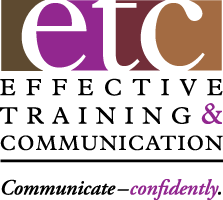Many business professionals diligently attempt to practice the ‘Golden Rule’ at work that we all learned as youngsters. A workplace communication version of that philosophy would be ‘Communicate with other people the way you want them to communicate with you.’
While a nice warm and fuzzy concept, a quick reality check indicates two serious flaws in the logic: the ‘Golden Rule’ assumes ‘everyone is the same and that ‘everyone is the same as you.’
While the ‘Golden Rule’ doesn’t work at a certain level of specific application, the ‘Platinum Rule’ does. Rather than communicating with other people the way you want them to communicate with you, it stresses communicating with other people the way they want you to communicate with them. First defined by Dr. Tony Alessandra in the 90s, it is 10 times harder to do well, but 100 times better than the ‘Golden Rule’. So, you do the math and see if you find value in it.
Here are 10 Best Practices and Lessons Learned that can help you evolve into Platinum Rule Workplace Communicators:
- Accept the reality that people are different. Many of you are acquainted with the various personality style profiles that validate this aspect of diversity. DiSC, MBTI and MIR all point to key differences in how people communicate and, therefore, how they like to be communicated with at work.
- Recognize your personality style preference and its inherent communication strengths and weaknesses. Play your strengths while minimizing the negative impact of your weaknesses. Above all, strive to be flexible and adaptable.
- Commit the time to plan workplace communication one individual interaction at a time. That’s where the 10 times harder part comes in. While it’s easier to go through the motions of communicating on ‘Golden Rule’ autopilot, that strategy misses the target most of the time.
- ‘Platinum Rule’ Communicators are ‘receiver-centered’ instead of ‘sender-centered’. They realize the whole communication process revolves around sending messages to receivers on terms that will help them accomplish the defined outcomes of that specific communication process. It’s all about them – the receivers‘ and the outcomes and not at all about us, the ‘senders’.
- When you know, or can accurately guess the primary style of the receiver, modify your approach accordingly. Your goal is to maximize comfort for the receiver and minimize the conflict inherent in our communication differences. In so doing, you increase the receiver’s potential for active listening, understanding, retention and action that support your defined outcomes.
- When you don’t know the receiver’s style, look for clues in the type and amount of words they regularly use, the tone of their voice, their pace of delivery, body language, even attire and what you see in their work space.
- While we have a component of each style quadrant in us, we tend to wear one ‘hat’ more than the other three. Using the DiSC terminology, if the receiver looks like a ‘D’, sounds like a ‘D’, uses ‘D’ words and even dresses like a ‘D’, he or she is probably wearing the ‘D’ hat at that moment. So, communicate with that ‘D’ the way that ‘D’wants you to.
- When you don’t have enough of a sense for style yet, use some all-purpose ‘default’ strategies that will initially work until you get more telling signs. Talk less and listen more. Tell less and ask more. The extroverts will appreciate your ‘less is more’ approach that allows them to talk more and the introverts will be more comfortable with you. Ask good focused questions to gather important data without interrogating or intimidating.
- Offer choices where possible and appropriate. Under-promise and over-deliver on those choices. And make sure they’re receiver-centered choices.
- And above all, ‘Platinum Rule’ Communicators interact with ‘uncommon courtesy’. This means saying what you’ll do, doing what you say and being respectful of the receiver’s time, feelings and needs.
Like I said up front, being a ‘Platinum Rule Workplace Communicator’ is 10 times harder than interacting on ‘Golden Rule autopilot’, but 100 times better. If you want to evolve into a much higher level of workplace communication effectiveness, make the commitment to do what it takes. All the rest is just details. That’s why ‘Platinum Rule Communicat0rs Rule!’
